Intern adventures: A look at an Owl’s experience studying invasive plants
Kelly Meinert, Class of 2024, worked on a research project about invasive plants at Temple Forest Observatory over the summer.

This summer, biology major Kelly Meinert, Class of 2024, planted herself at the Temple Ambler Field Station. Thanks to the College of Science and Technology Research Scholars Program, Kelly had the opportunity to work on an independent research project about small invasive plants that can thrive under taller trees’ canopies—at Temple Forest Observatory (TFO). Since a devastating EF2-level tornado hit Ambler’s Campus, the campus has focused on rebuilding and studying the recovery of TFO.
Besides immersing herself in the plant life of Ambler’s campus, Kelly helped gather data for an experiment analyzing the spotted lanternfly. At the end of her internship, she presented research findings of her individual project to the Ambler community.
But no more beating around the bush. We’ll turn it over to Kelly to give us a closer look at her Ambler Field Station experience.
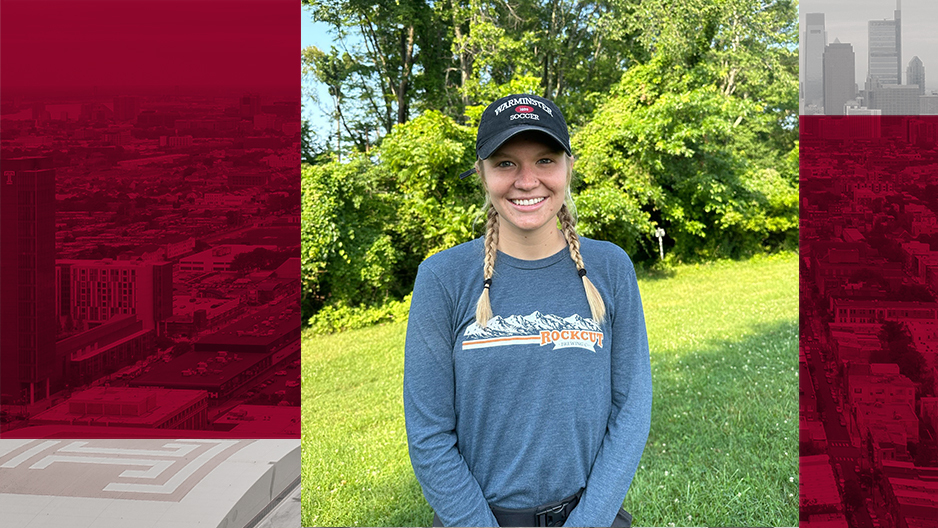
This summer, I was fortunate enough to work as an intern at the Temple Ambler Field Station, under the College of Science and Technology Undergraduate Research Program. This has been rebranded as the CST-Research Scholars Program, or CST-RSP. To participate in this program, I filled out an online application and was then matched with one of my professors, Brent Sewall. I had expressed an interest in working with him after taking his Animal Behavior class this past spring. Through this program, I received a stipend and was expected to work full time, dedicating about 400 hours to the specific research projects I was assigned. For me, this meant that I worked on the Ambler Campus from about 8:30 a.m. to 5:30 p.m. Monday through Thursday for 11 weeks.
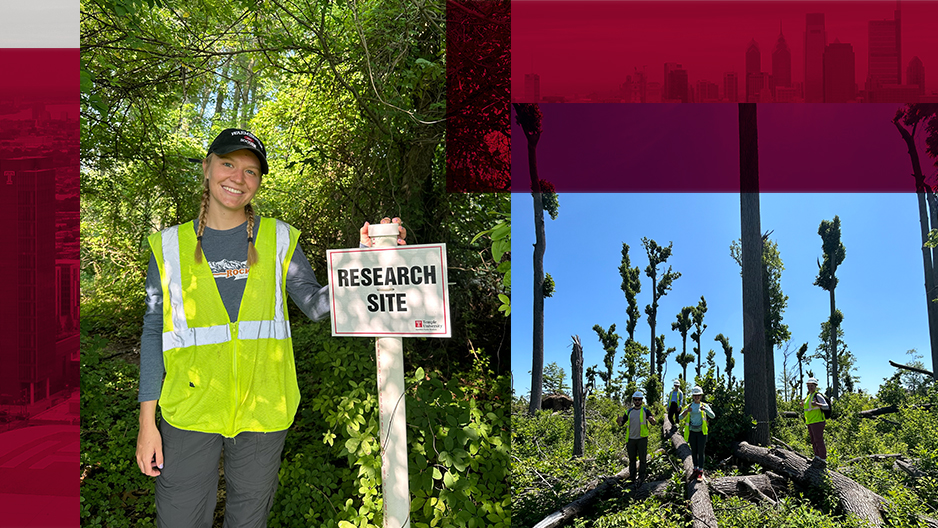
At Temple Ambler in 2020, a relatively small (4 hectares) but beautiful stand of old-growth forest was aptly named the Temple Forest Observatory and set aside for study in collaboration with the Smithsonian Institution’s Forest Global Earth Observatory. Tragically, on Sept. 1, 2021, a powerful EF2-level tornado ripped right through the heart of the TFO, largely devastating the forest by downing and defoliating most of the 150+ year-old trees. However, rather than give up on the potential research opportunity of the previously undisturbed forest, the Ambler Field Station instead shifted its focus to study the recovery of the forest after a large-scale wind disturbance. In this picture, some of my coworkers are standing in the middle of the Temple Forest Observatory nearly two years after the tornado, with the damage still clearly visible.
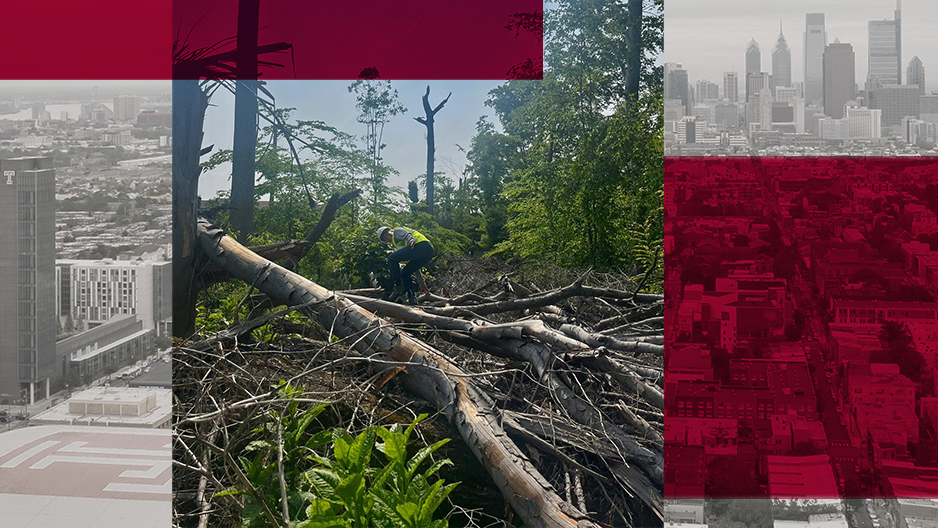
This summer, the Ambler Field Station team completed a census (official count and measurement) of adult woody plants, a percent cover survey (determining how much ground is covered by different species) of understory plants and a seedling inventory (count of “baby trees”) in a selection of the 20 m x 20 m quadrants that divide up the TFO. Despite having had hardly any experience working with trees or other plants prior to this summer, I could now consider myself quite knowledgeable of local native plants due to my training and work at the Ambler Campus! In the field, I learned how to quickly identify plant species, measure tree diameter and height, and estimate how much ground was being covered by a specific species in a specific area. Moreover, I got to work outside every day and learn how to navigate through a severely disturbed forest.
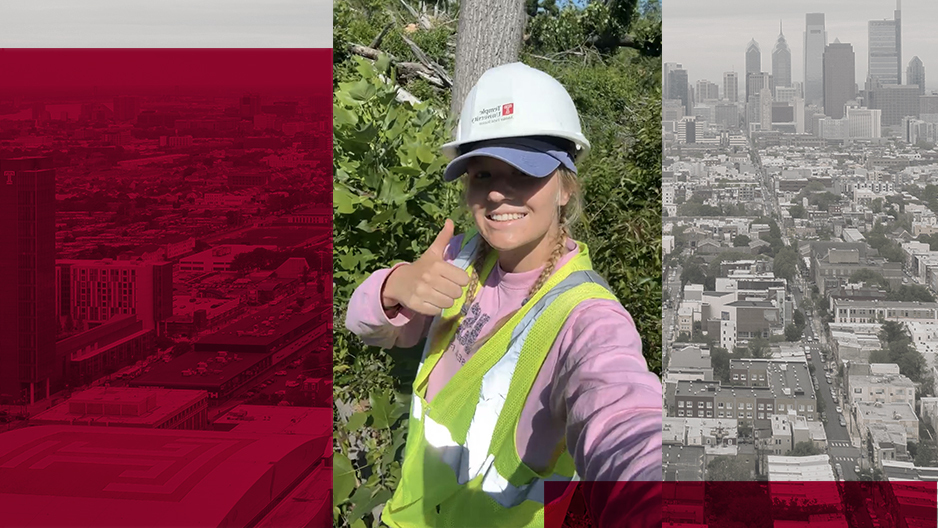
Safety always comes first when you work in a heavily disturbed forest every day! Even on the hottest of summer days, it was always important to wear long pants and long-sleeved shirts, as well as sturdy boots, thick socks, sunscreen, bug spray and a hat. Believe me, when you are walking through sharp branches and thorns with ticks all around, you quickly become grateful for all the extra layers!

In addition to my work with forest recovery in the TFO (under the direction of Amy Freestone and Mariana Bonfim), I spent a lot of time helping collect data for a large experiment focused on the recent invasion of the non-native spotted lanternfly (under the direction of my advisor Brent Sewall). As a part of this experiment, every two weeks we would replace the plastic bags on “circle traps” that we had installed on different trees all around the Ambler Campus. We would then count and weigh the number of spotted lanternflies in each bag to try to determine if they were demonstrating any preference for certain species of native trees.
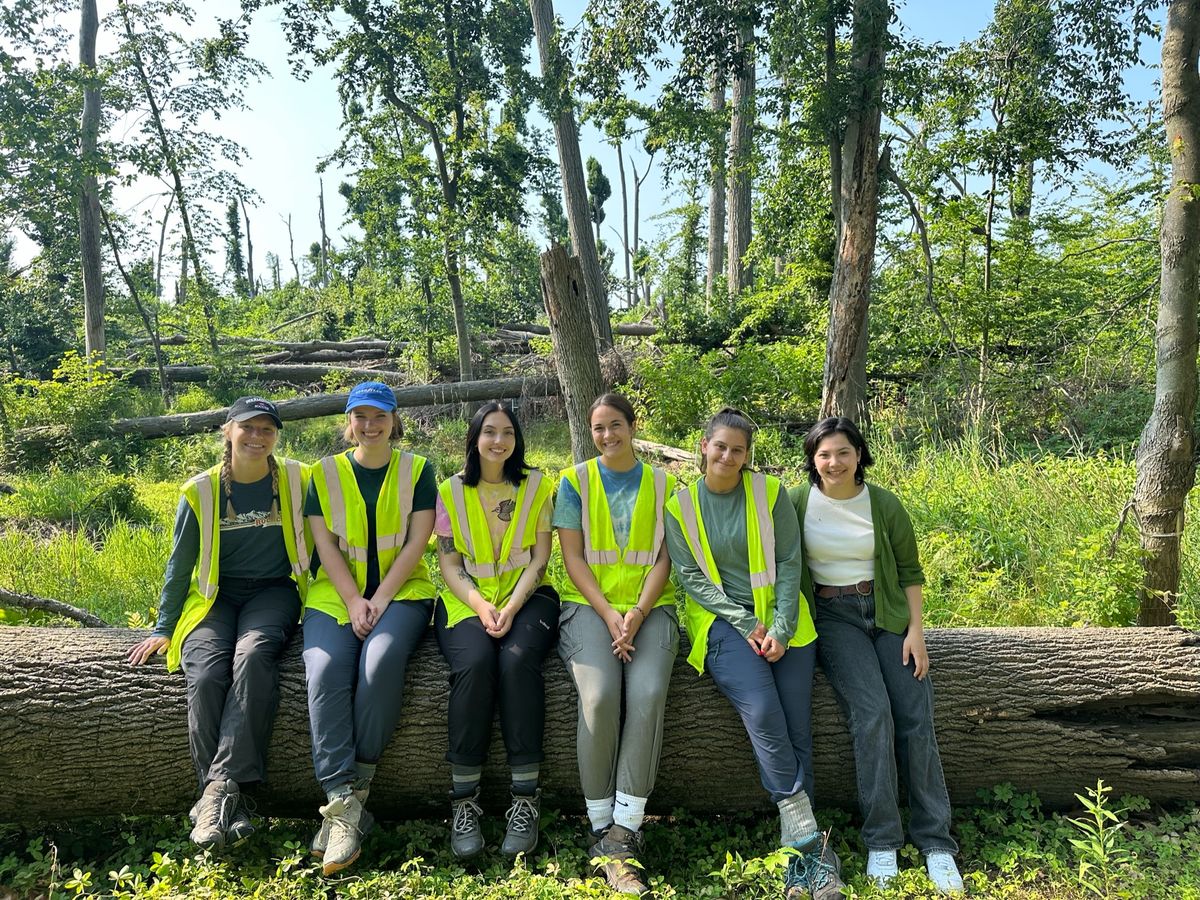
There’s nothing better than getting to work with your friends! At the beginning of the summer, most of the seven undergraduate interns working at the Ambler Field Station had never met before, even though we all study similar topics and are largely interested in the same disciplines. However, after spending every day together for so long (and in such unique circumstances), I can now genuinely call each of my fellow interns a close friend. I will forever be grateful for this experience, not only for the opportunities it provided in my desired field, but also for the lifelong friendships that I have surely made along the way.
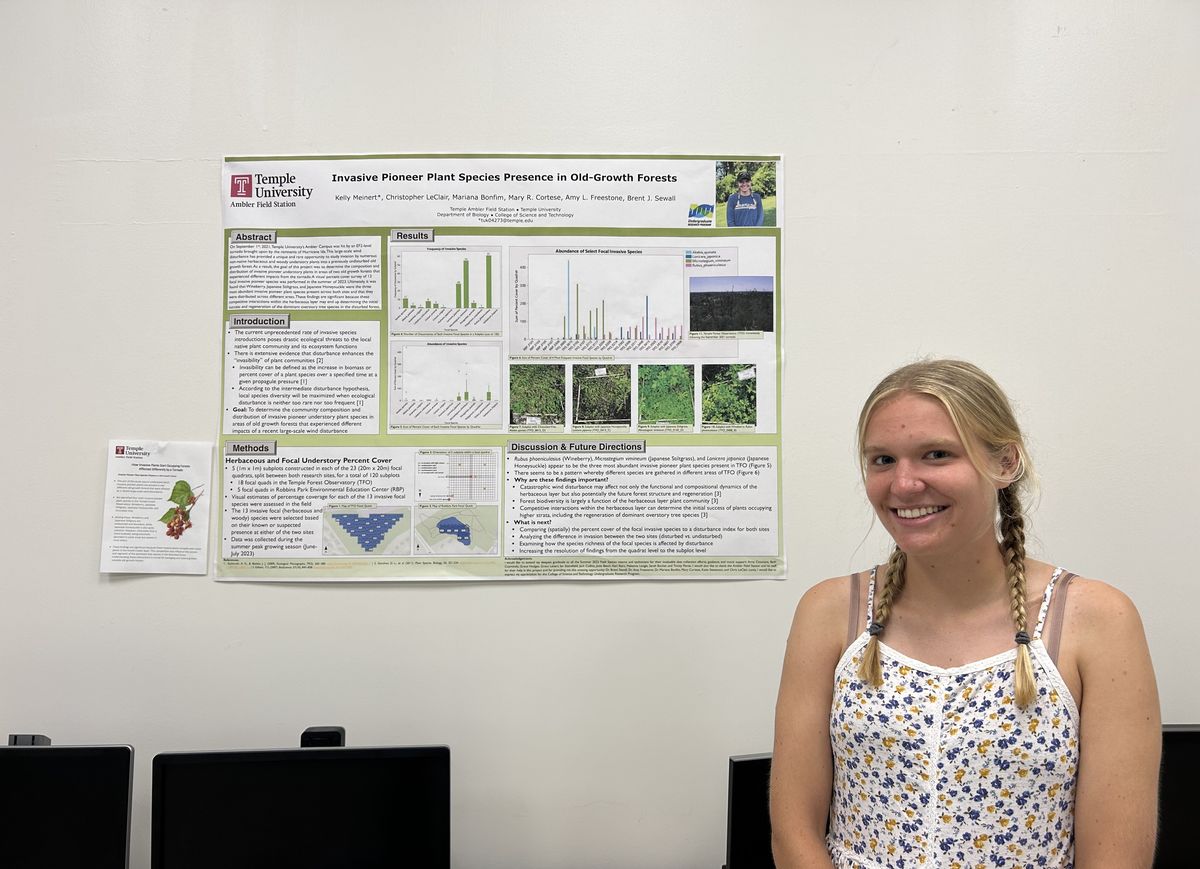
On the last day of my internship, the Ambler Field Station held a mini research symposium to give all the interns an opportunity to present their independent projects to the Ambler Campus and Ambler Arboretum community. After working hard on my independent project on the presence of invasive understory plants all summer, it was such a delight to be able to formally share my findings with all the people who had helped me along the way. In this picture, I am standing in front of the poster that I made to share the findings of my project. It was amazing to see all of our hard work pay off!
Looking for support finding an exciting internship experience like this one? Temple University’s Career Center helps current students and alumni explore different career paths and prepare for their dream careers.


